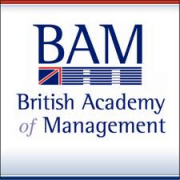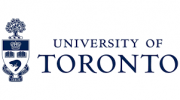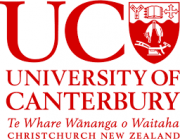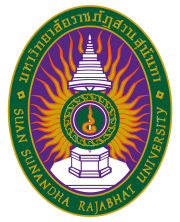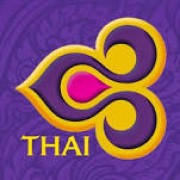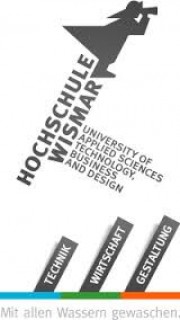Submission Guideline
Guide for Authors
The International Conference on Satainable Developmeent in Business and Supply Chain Management 2014 is organized by IJBTS Journal (Indexed list in Paris, France) and Schoolars Cooperation with in Wismar University, (Germany); University of Plymouth (UK) to be held in University of London (UK) The conference seeks to be a great opportunity for business, accounting, marketing, tourism,healthcare, human resource, education & teaching, information technology, production, operations, logistics and value/supply chain management researchers and practitioners to share ideas, research findings and future directions of researching and teaching.
Objectives
The objectives of ICSBS 2014 are to advance knowledge business and science and to stimulate greater thought and effort in the fields of business, accounting, marketing, tourism, healthcare, human, education & teaching, information technology, transport, logistics and supply chain management, and operations research, and by providing readers with:
· Novel and useful information;
· New business, tourism, healthcare, human, education & technology, information technology, production, operations, logistics and value/supply chain management, theory or techniques;
· Research explaining about business, tourism, health care, human, education & teaching, information technology, production, operations, logistics and value/supply chain management thought and practice;
· Articles in subject areas which have significant current impact on thought and practice in busines, tourism,health care, human, education & teaching, informational technology, production, operations, logistics and value/supply chain management.
Content
The ICSBS 2014 will mainly consider for publication three types of articles:
1. Articles that report empirical research on business, tourism,health care, human, education & teaching, information technology, production, operations, logistics and value/supply chain management issues.
2. Articles that report on the development of methodologies and techniques that can enhance business, tourism, health care, information technology, production, operations, logistics and value/supply chain management decision making.
3. Articles that report the application of decision tools to generic or specific Business tourism, health care, human, education & teaching, information technology , operations, logistics and value/supply chain management problems.
Manuscripts should be between 2,500 and 3,000 words, typically 8 single-spaced, typewritten pages. Articles of shorter length are also acceptable. Only rarely will it be possible to publish a manuscript of more than 3,000 words.
Review
Articles are considered for publication if they have not been published or accepted for publication elsewhere and are not being concurrently considered elsewhere.
No manuscript is accepted for ICSBS 2014 until it has been reviewed by the Editor or one of the Associate Editors and at least two outside reviewers who are experts in their respective fields.
All manuscripts are judged on their contribution to the advancement of the science and/or practice of transport management, logistics and supply chain management, and operations research. The editors expect all manuscripts to follow accepted standards for scholarly work. Manuscripts are judged not only on depth and scope of ideas presented and their contribution to the field, but also on their clarity, organization, readability, and comprehensibility.
Manuscripts should be written in a manner that is interesting and readable to both practitioners and academics. It is beneficial to include a section regarding managerial implications and discussion of the consequences of applying the proposed ideas. Technical terms should be defined.
MANUSCRIPT PREPARATION
Manuscripts should be typed single-spaced (except references) in 12-point type using New Times romance or similar type. Use single spacing in endnote references. Number every page at the bottom center. Please allow the text to wrap, rather than entering a RETURN or LINEFEED after every line.
Manuscripts should be submitted electronically, preferably in Microsoft Word, to the Editors at the following e-mail address: icsbsconfo@gmail.com
The sections of the manuscript should be placed in the following order: Title page, Authors, Abstract (on a page by itself), Body of the Text, References, and Appendices.
Title Page
ype the title in bold type, all caps, single-spaced, and centered across the top of the first page, in 12 point New Time Romance, as illustrated above.
Authors
he author(s), affiliation(s), mailing address(es), and e-mail address(es) should be single-spaced and centered on the line below the title, in 10 point bold New Time Romance for the author(s), and in New Time Romance for the remainders. One line space should be used to separate author(s) from the paper title. Please do not use titles such as Dr., Professor, etc.
Abstract (on a page by itself), and Body
Introduce the paper with an abstract of approximately 200-300 words, in 10 point New Time Romqnce. Begin with the centered heading “Abstract”. All body paragraphs should begin flush left (no paragraph indent) and right justified. Single-space the body of the paper. Use 10 point New Time Romqnce throughout. Figures and tables should be placed as close as possible to where they are cited. First-level headings state the table or figure number. All tables and images should be embedded into the file and sized appropriately. All photographs should be sampled at 300 dpi (dots per inch). Keep in mind that web graphics are typically sampled at 72 dpi. Photographs must be properly sized and positioned in the body of the paper.
llustrations (Tables and Figures)
Each illustration should be numbered consecutively within its series type (Table 1, Table 2, Figure 1, Figure 2). If illustrations appear in appendices, they should be numbered consecutively, but separately from body illustrations (e.g., Table A-1, Figure A-1). In the text, refer to tables and figures by their numbers. Avoid using “above,” “below,” “preceding,” and similar terms. All Tables and Figures must have titles. Titles for each Table and Figure should be descriptive but not lengthy. The title should be in bold letters at the top of the Table or Figure.
Tables and Figures should be called “Table” or “Figure” and should be followed by a blank line and then the title for the table or figure also in bold letters at the top of the table or figure.
For Journal purposes, tables and figures are defined as follows: a table is comprised of rows and columns of numbers and/or text; a figure is a chart, graph, diagram, map, drawing, or any other non-text item that is not a table. Tables should be typed in the following style:
General Design
For more effective communication and better quality reproduction when printed, tables and figures should be kept as simple and uncluttered as possible, while conveying all necessary information.
Details
Footnotes should appear directly below illustrations, flush with the left edge, and they should be designated by small letters, rather than asterisks or numerals. Column or row heads should be footnoted only if the footnote applies to all items in the column or row. Complete source information must be provided for illustrations copied or derived from other sources. This complete information should be provided and an author-date citation should be given in a source note on the illustration. (Source notes are sized and placed like footnotes, below any footnotes for the illustration.)
if elements on an illustration are not labelled, but represent certain categories, items, or amounts, a complete key (legend) should be included. Make sure that necessary measures of statistical significance are reported with each illustration. Designate units (percent, dollars, hours, etc.) in column and row headings (tables) or in element labels or keys (figures). Separate from each figure, give numerical values for all points, bars, pie slices, etc., so that they can be readily reproduced by the typesetter, if necessary. Double-check formulae and mathematical terms and equations for consistency, readability, and accuracy. Add extra space between characters to clarify and separate the terms, and be sure that sub and superscript relationships are clear. Check for opening and closing parenthesis and brackets. Write the names of Greek and special characters in the margin.
Use tab indents or column alignment, rather than spaces, to align columns and indent headings.
English (USA) spelling should be used; foreign terms not commonly used in English (USA) should be italicized.
Regarding Mathematical Notation
The percent sign (%) should be used in text and in tables. Mathematical notation must be clear within the text and illustrations. All equations must be very clearly typed. Display (separate line) equations should be aligned to the left margin. Italic type is used for letters in equations, except for trigonometric functions and logarithm abbreviations, which are plain (normal) type. Matrices and vectors are in boldface type. (If these cannot be typed in italic and boldface, italic type can be indicated by a hand-drawn straight underline and boldface by a wavy underline). Unusual and Greek symbols should be typed in the text using the Symbol capability. If no Symbol capability is possible, such special characters should be identified by name in a marginal note. (This is important; the editor may be not familiar with these symbols and may have difficulty producing the correct one without a marginal note.) For equations that might be too long to type in a 6” column, indicate appropriate breaks.
Citation
The ICSBS 2014 follows the reference format of Academy of Management Journal. This format is available at the AMJ's websitehttp://aom.pace.edu/amjnew/style_guide.html. The use of footnotes is discouraged.
References
References are to be listed alphabetically, last name first, followed by publication date in parentheses. Use full first name, not just initials. The reference list should be typed single-spaced in 12-point type. Please let the Endnotes wrap rather than using tabs or returns at the end of internal lines. Do not use indents, tabs, or symbols to delineate your paragraphs. Instead, use two hard returns between each reference.
Proceedings/Journal Articles:
Polychronakis, Y. E. (2007), “Application of Project Management Principles for Supply Chain Development in the Public Sector,” International Journal of Logistics and Transport, Vol.1, No. 1, pp. 135-145.
Books
Stock, J.R. & Lambert, D.M. (2001), Strategic Logistics Management, 4th Ed. New York: McGraw-Hill Irwin.
Authors are responsible for the accuracy of their references. Check them carefully. Readers’ questions and comments about incomplete and inaccurate References will be referred to the article authors with a follow-up by the Editor. All authors of a referenced work should be listed; et al. should not be used in the Reference list. Undefined acronyms should not be used.
Appendices
If any mathematical proof or development is used but not critical to the exposition of the main argument of the manuscript, authors should include it in an appendix. An appendix may also be used for the mathematical material that may be beyond the level of the average reader.
Electronic Submission
Manuscripts should be submitted electronically, preferably in Microsoft Word, to the Editors at the following e-mail address: icsbsconfo@gmail.com. If it is not possible to submit an electronic copy, send three (3) copies of the manuscript to the Editors. Non-electronic submissions require more time to administer, so authors should be aware that the processing time for their manuscripts will be longer.
When the authors are notified of acceptance, they will be asked to provide the final, accepted version of the article on in electronic format containing the article text files.
OTHER REQUESTS FOR SUBMISSION
All correspondence regarding submission should be directed to:
Chayanan Kerdpitak, Management Chair
Phone: 087-0287287, Fax: (662) 994-5021, E-mail: icsbsconfo@gmail.com

